Growing your own vegetables can be an extremely rewarding endeavor for numerous reasons. Observing, and dedicating time to, the complete growth cycle is as accomplishing as it is therapeutic. Our guide to planting your own vegetables includes tips and tricks that will give you fresh,
home-grown produce to be proud of.
How To Prepare A Vegetable Patch
Position
Most vegetables need 6 to 8 hours of sunlight daily. Many of the vegetables that you’ll put into your patch are annuals, so they are working with a shorter time frame and need to grow rapidly. This is why full sun is important as it allows them to fuel the growing process.
Your patch should be sheltered from winds as this can affect growth and leaves can blacken from wind burn. Implement some form of windbreak to protect the more delicate plants – this can be fencing, hedging, and hurdles.
Clear The Space
Be sure to clear the soil of the area you’re using from weeds before you do any planting. Cover your patch for a few weeks in early-spring as this warms the soil so you can plant or sow earlier. When you uncover your patch, any annual weeds can easily be cleared.
Do You Need A Raised Bed?
The ideal vegetable patch should have well-fed, well-drained soil with lots of organic matter mixed into it. You’ll want your topsoil depth to be around 1ft.
To check the condition of your soil, dig out a 17 x 17 inch hole and look at the colour change in the soil. The darker soil is your topsoil – if it is too thin you’ll want to build raised beds for your vegetables. Pour some water into the hole you’ve made, if it drains away quickly then you have well-drained, chalky soil, and if the water stays there you have clay soil.
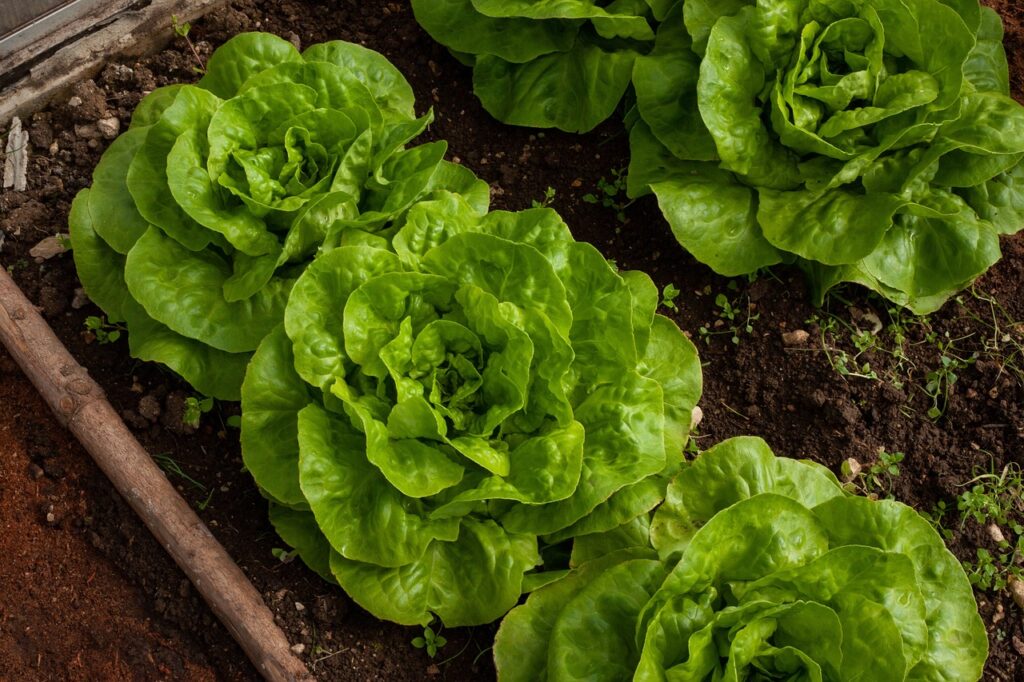
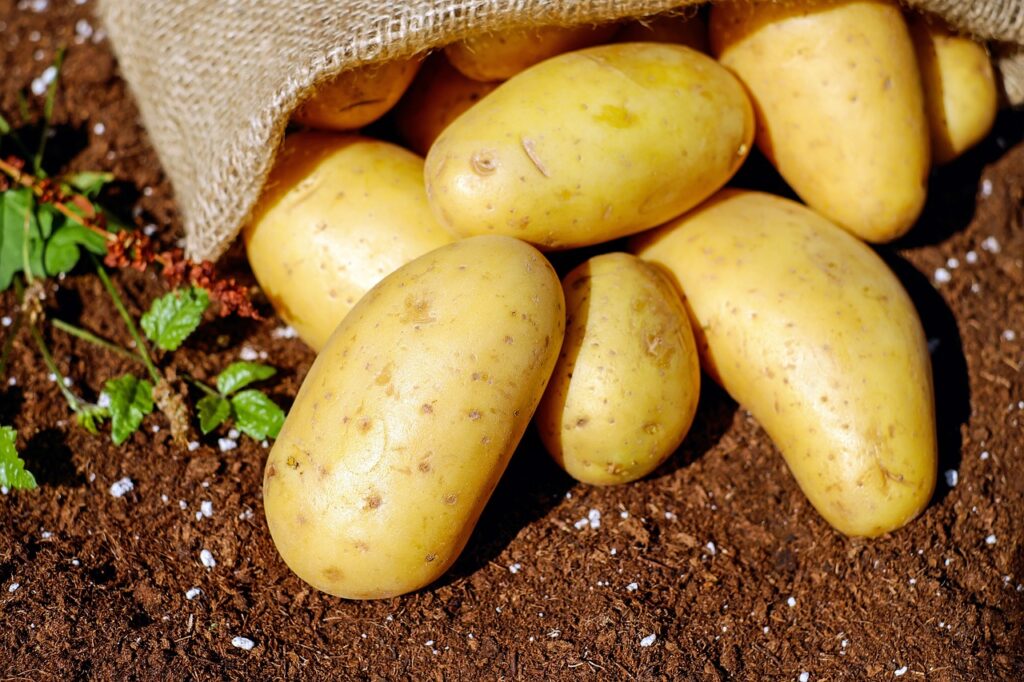
Vegetable Patch Layouts
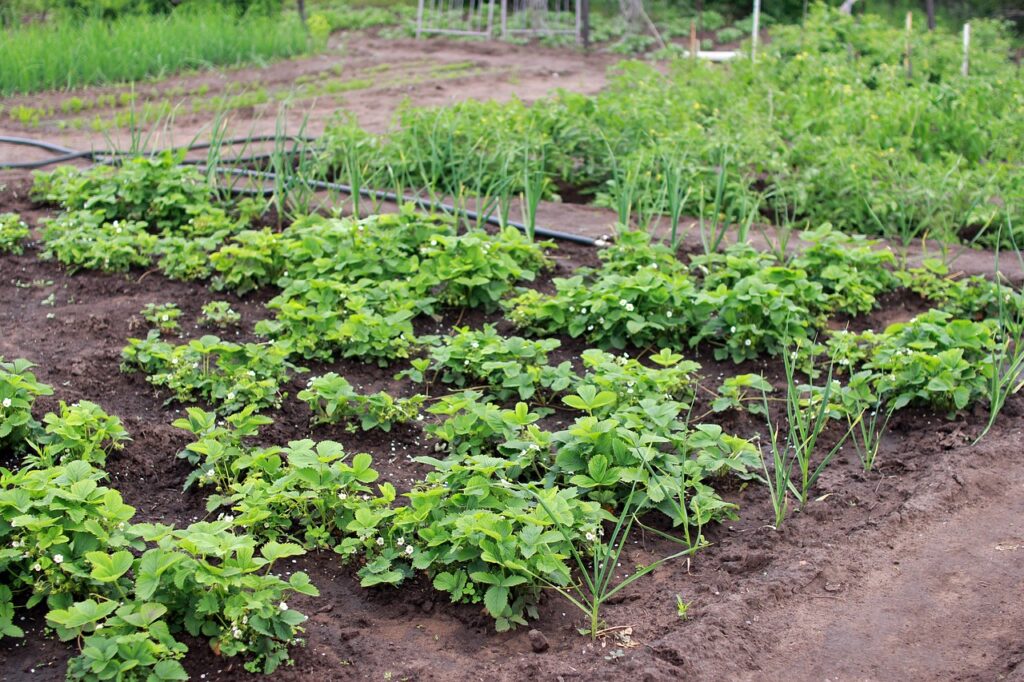
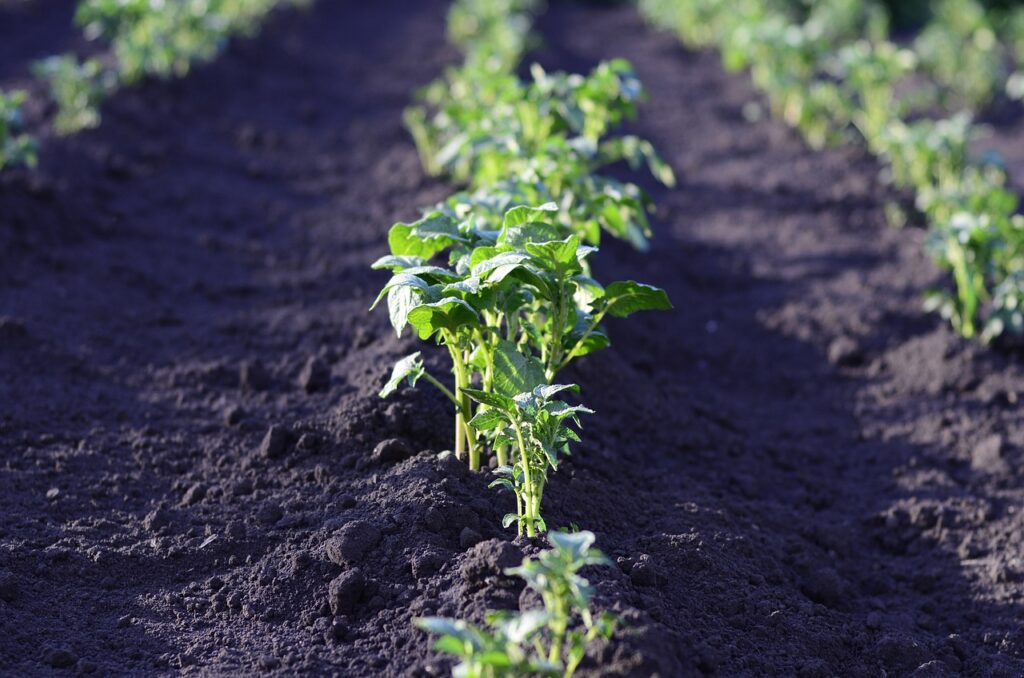
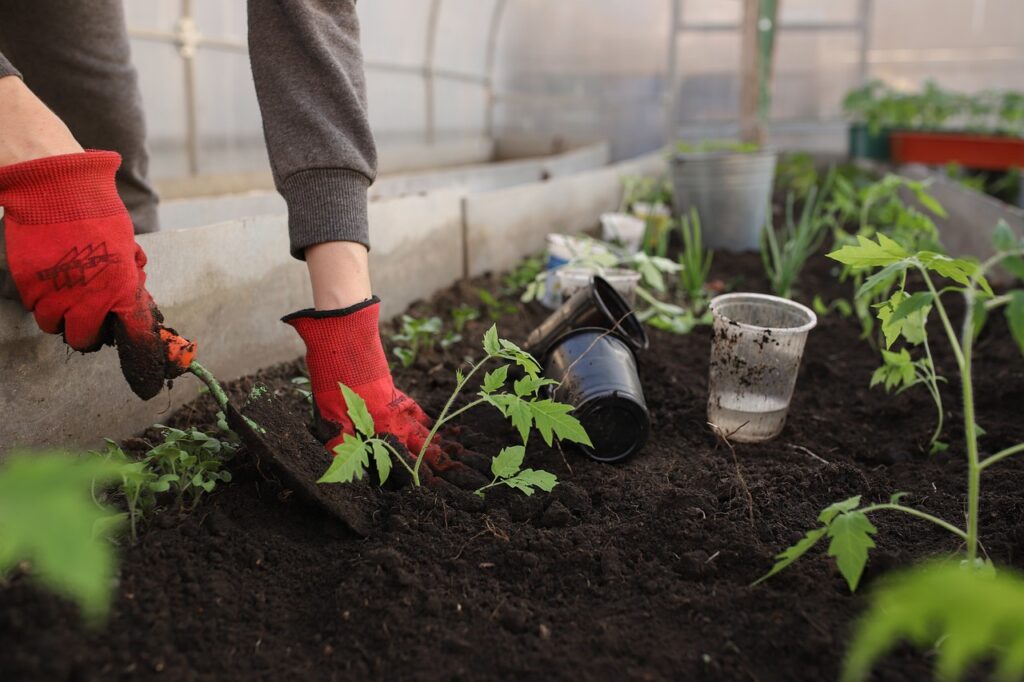
Four Square
You can divide a patch into four sections. These sections are for different plant groups:
1. Roots – light feeders (potatoes, beetroot, carrots)
2. Soil builders (beans & peas)
3. Salad & Herbs
4. Heavy feeders that need lots of nutrients (leafy greens, courgettes etc.)
This layout is advantageous because it encourages crop rotation – rotating each group to the next square in the following year. Doing so helps to prevent pests and soil diseases.
Rows
The simplest design that is composed of long, straight rows from north to south. North to south ensures the best sun exposure, east to west becomes a problem as the rows will become shaded as the preceding row grows.
1. Tall crops such as beans and corn should be grown on the north side to prevent them from shading shorted crops.
2. Medium plants like cabbage, squash, and tomatoes are to be grown in the centre.
3. Your shortest crops which may include lettuce, carrots, or radishes should be grown on the southern side.
Block
Also known as close row or wide row planting, this layout significantly increases yield over traditional rows planting.
For this method, you plant vegetables in rectangular beds/blocks opposed to singular rows – maximising gardening space as you need less walkway space.
The crops are densely planted together so will require fertilisation. Overcrowding can lead to diseases as there is less air circulation.
Vertical
This layout is ideal for people with little to no garden as it takes advantage of vertical space, opposed to ground area. You can do this by planting along trellises and hanging baskets, or using stackable containers.
Good Vegetables For Beginners To Grow
Ways To Deter Common Pests
1. Orange Peel Spray
Bugs dislike citrus scents’ and so spraying your plants with a home-made spray will deter them. To make this spray, add some peels and water to a saucepan, allow to boil, then simmer for 10 minutes. Strain the liquid into a spray bottle, then spray your plants every couple of days. This concoction will deter pests such as slugs, aphids, fruit flies, ants, and more.
2. Sticky Traps
An effective way to stop small insects getting to your plants is by using sticky traps. Simply place the traps between your plants and they will be unable to escape – make sure to check them frequently.
3. Vinegar Spray
Not only is vinegar a natural bug repellent, it’s also a great weed killer. You’ll need one part vinegar, three parts water, and a teaspoon of dish soap mixed into a spray bottle. Only spray the sides of your vegetable plants, never the vegetables themselves.
4. Tomato Leaf Spray
Tomato leaves contain an organic compound called alkaloid, and this compound is toxic to aphids and mites. Therefore, a great way to deter pests from your plants is by using these leaves to make a spray. Chop up some tomato leaves and place them in water, allowing it to steep overnight. Strain your concoction into a spray bottle and then you can spray the leaves of your plants.

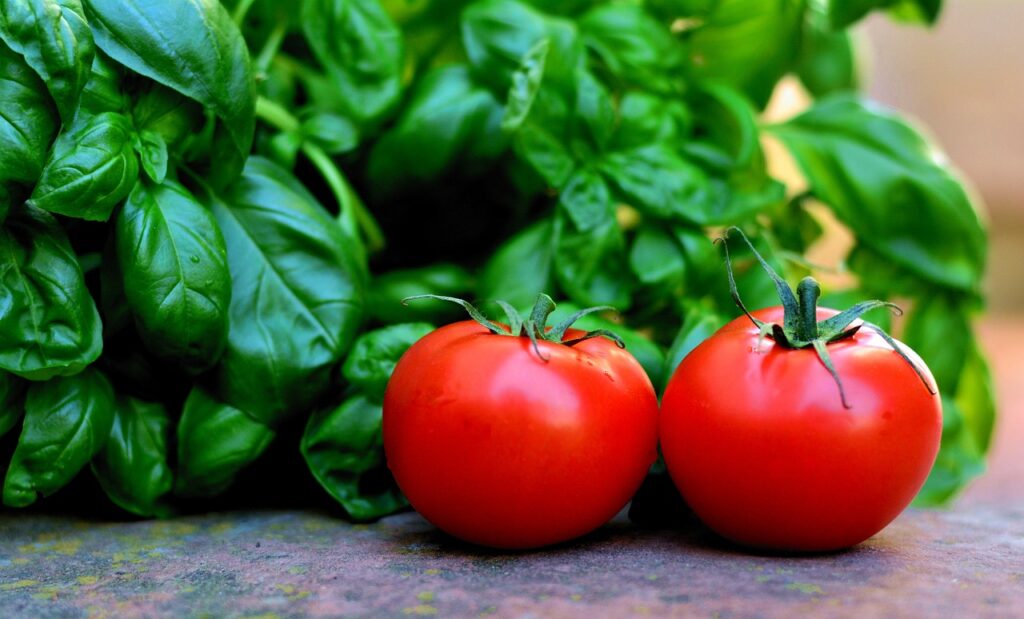
If you found our guide to culinary herbs useful and are looking for more ways to grow your own, click here for our guide to planting your own culinary herbs.